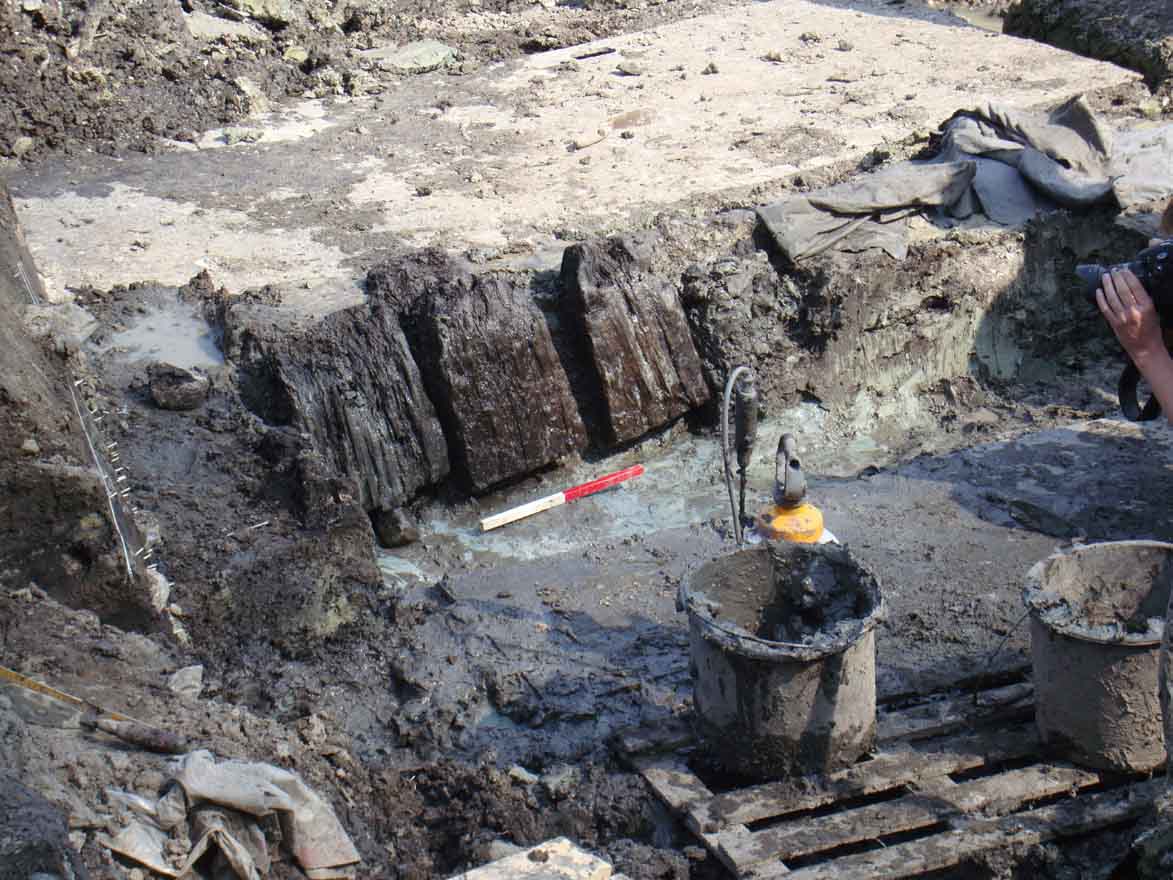Viking Palisade in Jelling will hopefully be dated
Just a few years ago Harold Bluetooth’s famous Jelling Monument (UNESCO World Heritage) was believed to be small and compact, basically consisting of the famous Runic Stones and the two huge mounds with the medieval church in between.
To the excitement of the archaeologists extensive archaeological excavations during the last decade have documented the size of a much grander military installation complete with a formidable rhombic palisade encircling an area 360 x 360 meters, 12,5 acres or of the size of 20 soccer-fields.
Inside the palisade, buildings of the so-called Trelleborg type has been excavated, plus new research based on the old excavations near the medieval church has helped to identify the remnants of what was probably a mead-hall located next to the Runic Stones (and not a former wooden church as was previously believed).
 Last year the archaeologists began to dig for remnants of the palisade in a small pond situated on the South side of the present graveyard. And struck “gold”! Buried in the clay were the remnants of four posts with a diameter of app 15 cm and one of the planks, which had been used to wall it up. C14 analysis was carried out and the date was decided: definitely Viking.
Last year the archaeologists began to dig for remnants of the palisade in a small pond situated on the South side of the present graveyard. And struck “gold”! Buried in the clay were the remnants of four posts with a diameter of app 15 cm and one of the planks, which had been used to wall it up. C14 analysis was carried out and the date was decided: definitely Viking.
This summer the hunt has intensified. More than 34 meters of the palisade was built in the damp underground of the pond and the hope is, that further findings of posts will allow the date of the palisade to be determined precisely through dendrochronology. The question is whether the palisade was erected at the same time as some of the other magnificent constructions from the end of the reign of King Harold: The Ravning Enge Bridge and Trelle-borgene, the five magnificent ring-forts from around 980.
The Ravning Enge Bridge, which stretches 760 meters and is 5 meter wide, has been dendrochronologically dated to ca. 980 – 985. It was located across the small river “Vejle Å”, which runs app. 6-7 km South of Jelling. It is believed that the river was much more navigable a 1000 years ago. Like the ring-forts, it seems the bridge was only in use for about 5 years after which it was allowed to decay.
The excavations are part of a huge interdisciplinary research project, in which old knowledge is carefully sifted and reevaluated in view of the new findings. The plan is to publish a comprehensive review of the site in its historical and geographical context in 2013.
The project can be followed at the dedicated website “The Jelling project”
Visitors to Jelling may start at the website “Royal Jelling”.
The reconstruction is from Vejle Museum, which is responsible for the archaeological excavations in Jelling

